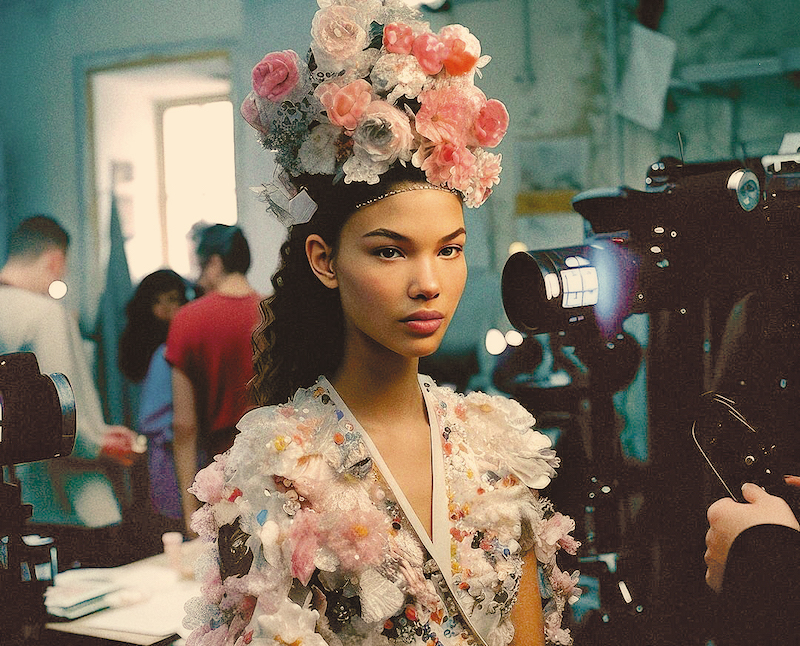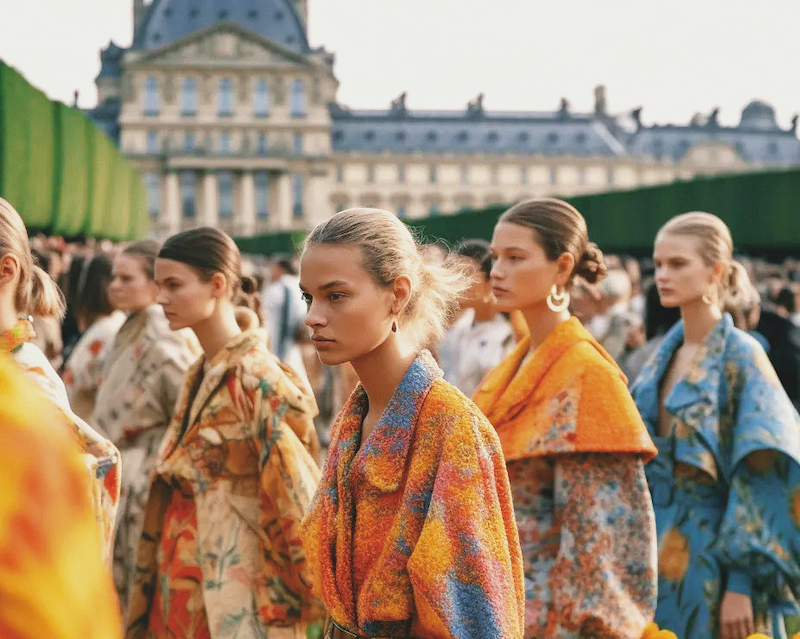
Its inaugural issue was launched in August (Photo: Copy)
There is probably no one, other than a photo retoucher, who has such close knowledge of Beyoncé, down to the pores of her powdered cheek. The behind-the-scenes wizard, more intimate with celebrities than their manager or personal trainer, is credited for making the faces of Naomi, Tyra, Gisele and Madonna — icons who became so famous they do not need last names — more perfect than they actually are. Award-winning photographer Annie Leibovitz and fashion impresario Anna Wintour will not even print a magazine cover without consulting one.
So why is a publication intentionally deconstructing glossy pictures of women as Formula One drivers, brokers on Wall Street and models of fashion week, and making them less perfect? Unless these images are so hyper-realistic, they need to be toned down to be believable. Such is the conundrum plaguing Copy, billed as “the world’s first AI-powered fashion magazine”, that it seeks to suspend belief.
We are not here to discuss the appeal or ethically murky realities of creating digital avatars that appear scrubbed clean in a creepy doll-like way with the help of some digital pixie dust — this fun party trick that quickly turned into a commercial avenue for generative artificial intelligence (AI) is a technological boom (or gloom) we already know. The more pressing matter is: What exactly is the purpose of putting together a magazine that features entirely AI-produced photos, articles and people with real-sounding names?
Its inaugural issue was launched last month, alongside a sparse website that has nothing on it except for contact details and a lacklustre elevator pitch flaunting phrases like “limitless potential” as well as “enriches and amplifies”. Its Swedish founder and creative director Carl-Axel Wahlström, a team of one, makes a grand claim: “[Copy] redefines the landscape of creative partnerships, showcasing how the synergy between human ideas and AI technology can revolutionise and inspire innovative creations.
For the mechanics, the 41-year-old former advertising consultant for brands like H&M and Gant employed the service of Midjourney, a popular AI source along with Dall-E2 and Stable Diffusion, that produces new images based on artwork and photos uploaded to the internet. This machine learning platform has been fed with content Copy has created or pulled from the World Wide Web, so what the AI trains on and generates are the imagery, aesthetic and narrative that align with Wahlström’s editorial direction. But here comes the interesting part.
Because AI is extremely literal, in the sense that it reflects the images and information based on the prompts we give it, the software would naturally conjure up fresh interpretations of the things we collect on the internet. In the case of Copy, its AI not only spits back representations of style, say, during the 1980s or the 1990s, but also their stereotypes and outmoded ways of portraying female bodies and shapes that are frowned upon now. Women were too skinny, too white or too homogeneous. Wahlström ran these looks after all to encourage discourse among readers and urge them to examine how our take on style has progressed through the decades.
nw_1.jpg

Having said that, a huge shortcoming persists. A fashion magazine is all about spotting the next trend but Midjourney, regrettably, will not be able to make a clear projection of, for instance, an autumn/winter collection in a few years’ time because fashion is fluid, unpredictable and ever-evolving.
“This is AI’s conclusion of what fashion is: that it’s glamorous. If you try to prompt a very cool, independent designer, the AI doesn’t know that; the AI knows the broad painting strokes of what fashion is and what it represents,” says Wahlström in an interview with Vogue. He plans to release the magazine twice a year, with the next issue at the beginning of 2024.
Does Copy warrant serious consideration and reading then? Critics who managed to flip through it were either flummoxed by pull quotes that induce eye rolls like “I collect experiences and the occasional private island” or flattered by page after page of astutely manicured “empowered figures”.
The same expediency that TV ads use to get to the punch line is replicated in fashion, where a visual must be instantly arresting and evocative to make a product appealing. That is, perhaps, Wahlström’s biggest goal, rather than making money or being accepted by real publishing houses which may consider Copy bogus. Even so, there are a few useful takeaways from this seemingly vacuous remix between designer and droid: AI, which references what we have done and not where we want to go, allows us to rehash activism and movements that forward humankind, forgo traditional seasonality and abandon an industry pockmarked by bullying as well as discrimination.
Dressing for the AI age, and living in one, can be done meaningfully. Whatever your views are about the AI Fashion Week that took place in New York earlier this year, the event backed by Spring Studios and e-commerce retailer Revolve Group is making the case for AI as a tool or aid — not a cheap shortcut — for supporting new designers to bridge the physical and digital, from creating mood boards to crafting the perfect virtual backdrop for their runway. Because all winning garments will be produced physically and sold online, the show eventually brought people back to the real world. Human creativity remained the focus, without letting AI dictate every step of the way.
ai-fashion-week_new.jpg

Generative AI is already experiencing a growth of its own in the world of fashion as more companies use it to design products, market clothes better, sell them more efficiently and improve customer service. McKinsey & Co estimates that in the next three to five years, it could add between US$150 billion (RM702 billion) and US$257 billion to the operating profits of the apparel, fashion and luxury sectors. The LVMH Group is already looking into applying such technology across its brands such as Louis Vuitton, Fendi and Tiffany & Co to fine-tune their sales forecasts, track demand and inventory in real-time, and leave a bigger impact on sustainability.
Tech is not far removed from the evolution of fashion. Like clothes, data conjures up a visual shape that defines a moment. Its power to mould perceptions will be a recurring theme for years to come on the runway or the newsstands. The question is, how much should we outsource our creativity to an algorithm?
This article first appeared on Sept 18, 2023 in The Edge Malaysia.


